Best Tips For Choosing Healthy Plants For Your Garden
Growing the most beautiful garden is one thing, but shopping for those plants you wish to take home is another, and while both activities are fun on their levels, we often see people talking about the propagation and maintenance of greenery, even when it all depends on the well-being of the plants you choose for your lawn area!
This is like wishing to make perfectly round ‘Chapatis’ even when the flour used is not of excellent quality; no matter how hard you try to make the most circular shape, if the flour doesn’t come out of premium quality wheat, then all your efforts will go in vain. Similarly, the foundation of creating & maintaining a beautiful garden is choosing the best plants available in the market.
So, let’s sharpen our minds about the intricacies of picking healthy plants to create the garden of our dreams!
Healthy Plant VS Unhealthy Plant
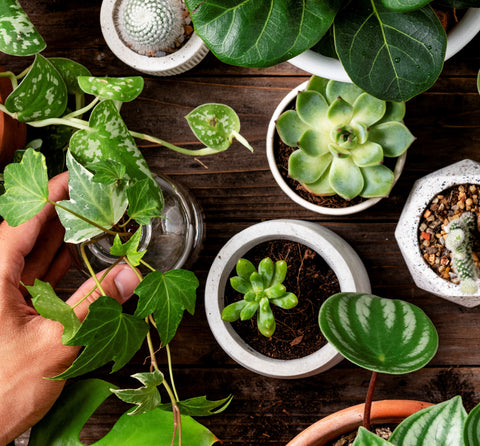
The main distinction between healthy and unhealthy plants can be witnessed through their personality. Sign of plants health is evident when we intently look at the plant in question. Most healthy plants look bright & beautiful with no holes in the leaves, no diseases in the plant’s being, and no signs of rotten roots.
On the other hand, the unhealthy ones look drastically different and dull compared to the healthy greenery. However, sometimes if not often, it gets confusing to distinguish between the two when the signs are too minuscule or when the gardeners have less know-how to make the distinctions. But fret not, for further in this article, we have mentioned all the ways through which you will become quite adept at picking healthy plant buddies. Read on!
How To Choose Healthy Plants?
Choosing healthy plants is all about having a keen eye for gardening and knowing what entails a plant’s well-being. Below are some points to consider before making your final purchase from a nearby nursery or an online gardening hub like ours:
#1 Go Green
The first rule of ‘how to check plants health’ is very simple yet essential in gardening guidelines - check the color of the foliage of your chosen plants. It is no news that the greener the greenery, the healthier it is. Look for any signs of wilting and yellowing leaves; if you find any, simply do not purchase. The leaves should be glossy bright green or at least match their natural shades, if not bright. Any plant that is wilting is probably going through stress, and it is possible to recover its health, but it will take lots of time & effort.
#2 Natural Growth
When buying a plant for a home, one thing that’s most crucial is knowing your plant from head to toe, as in, you should understand the dynamic of your plant. Learning about your favorite plants will not only assist you in properly caring for them, but it will also help you catch the ones growing out of sync with their natural potential. So, when you see a plant that’s unusually tall for its build, you will instantly know that it must be going through stress, making it rather stem-y.
#3 Pesty Guests
Insects & pests are skilled in hiding under the beauty of greenery, so at times, it might become a task to catch them red-handed. It is always better to wave your hands above the plants and see whether the air produced disturbs the flying pests. If there are any pests in hiding, they will fly with the flow of your hand’s wave. One should also scrutinize the plant’s leaves for any trace of a sticky white substance that can be a sign of sap-sucking insects like aphids. Also, ascertain the absence of holes and spots in the leaves before bringing the green buddies home. Also, don’t forget to pay attention to the potting soil because that can also be a storehouse of insects.
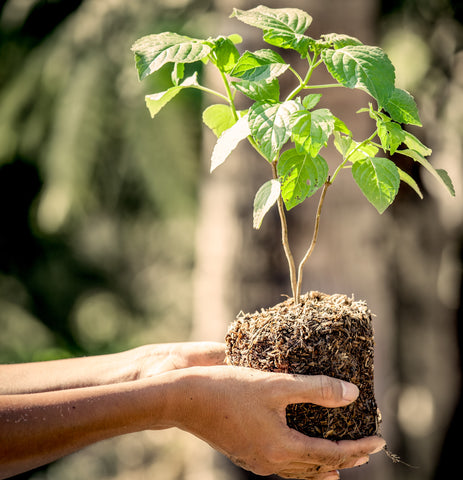
#4 Root Structure
Perhaps the reason why roots are called roots is because they are the foundation of any plant. The plant can never be healthy if the roots are not healthy. One should check the container for any signs of leaking roots through the drainage hole; this means the plant has become rootbound due to no re-potting into a larger grow bag. Similarly, if the roots have not developed properly and the plant comes out of the soil relatively quickly, the plant needs more time to settle into its existence. In both situations, it will be wise not to choose such a plant, as the stress caused by roots is often irreversible.
#5 Unnecessary Weeds
You don’t wish to take home some uninvited plantations that might tag along with your chosen plants, do you? For instance, you see beautiful plants potted in terracotta pots, you like the whole appearance, and just as you come closer to the container, voila, unwanted growths are waving at you along with the plant. Take it as a sign to point out to the nursery staff that they have been neglecting their plants, as they compete with the weeds to get the appropriate nourishment.
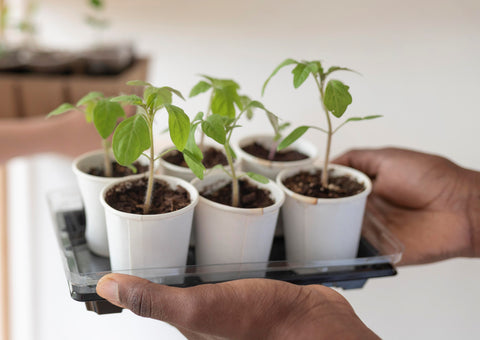
#6 Wait For Blooms
We know how tempting it gets to pick flowering plants that already have numerous flowers all over them. However, if you wish to see that plant flowering in your garden, pick a specimen that hasn’t yet allocated its energy to growing flowers. Once you take the plant home, it should channel all its energy into settling in the new garden and making healthy root structures; only after then should the plant focus its energy on blossoming with pretty blooms. And believe us, flowering plants that are yet to bloom will flower longer when you propagate them in your garden area.
How To Grow Healthy Plants At Home?
Once you have purchased the healthiest plants offline or online, it becomes essential to learn about maintaining their well-being because if you don’t know how to keep plants healthy, all your efforts for choosing the healthiest-looking plants will go in vain. So, here’s how to grow & maintain healthy plants at home:
➤ Gauge The Plant
Let us all accept that we can’t grow healthy plants until and unless we know what our plants actually need and want to flourish beautifully. So, it is suggested that you research the plant, google all you want, or perhaps visit a nursery and gather knowledge from the experienced staff.
➤ Give Them Space
Your plants will go best when their propagation area allows them the space to spread. When propagating in plastic pots, ensure the planter is big enough for the plant’s spreading potential. When growing directly in the plant soil, ensure ample space between two plant specimens. Also, make it a rule to check for abundant root growth, if any, and re-pot the plant accordingly.
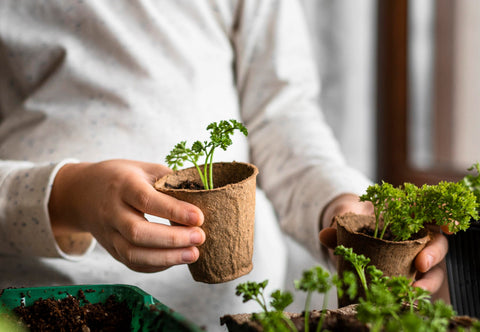
➤ Create Right Conditions
Once you learn about your plant’s growth requirements, it becomes easy to care for it. Place the plant under its preferred lighting conditions, and you can also use grow lights indoors if the area is dimly lit. Prepare an excellent soil mix with adequate nourishment that retains water yet doesn’t stay soggy. Hydrate the plants whenever you catch the soil on the drier side. You can also add boosters, like manure, cocopeat, etc., into the soil when preparing the soil mix. But if your plant takes a heavy diet of nutrients, feed it with regular and balanced fertilizers, and remember, don’t overpour your love.
➤ Prune & Groom
Most plants require regular pruning sessions that control their growth, give them a neat & clean appearance, and pave the way for rejuvenated growth. So, pick your gardening scissors whenever you catch a plant with damaged leaflets and start with the pruning regime. You can also trim the plants every now & then without the need to wait for the signs of damage. Pruning is an underrated gardening chore, but it will go a long-long way.
➤ Bonus Tips
Any plant that requires high doses of potassium will welcome the banana peel in its soil; just peel the banana and put it right below the plant’s roots to see the magic. Crushed eggshells are a natural alternative to pesticides and will provide ample nutrients to the plants. Moreover, if your garden is susceptible to rabbits, etc., sprinkle soap pieces around the area to deter those predators.
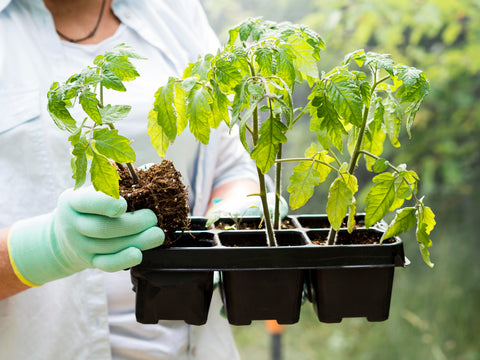
Conclusion:
Growing healthy plants at home begins by learning about the greenery you love. Once you know your plants better, it will become easier to gauge the differences between healthy and unhealthy plants. Look for any signs of decay, as stated in the article above, and if you don’t find any, feel free to take the plant home. Further, caring for healthy plants is the only way to maintain their health, so learn about their needs, and fulfill them in the best ways possible to maintain your garden's health, well-being, and beauty!
FAQs About Choosing Healthy Plants In India
Ques: How To Know If A Plant Is Growing Healthy?
Ans: A plant’s health can be ascertained by checking the leaves, stems, roots, flowers, and yield.
Ques: What Can Affect A Plant's Health?
Ans: The primary prerequisite for any plant to grow with the utmost health lies in providing adequate sunshine and measured water and propagating it in well-nourished soil. Moreover, treat the plant once or twice in thirty days with an organic fertilizer.
Ques: How To Know If A Plant Is Healthy Through Its Stem?
Ans: The plant’s stem should not carry any signs of damage like tearing, bruising, etc. Rather, the stem should look healthy with a thick personality.
Ques: Will Rootbound Plants Recover?
Ans: Rootbound plants can recover when they are instantly transferred to a larger container. However, it will take extra effort and patience on your part to see them recover.
Ques: From Where Can I Buy Healthy Plants In India?
Ans: Several online gardening stores like ours are ready to ship authentic and healthy plants across India. However, we suggest you check the authenticity of the green stores before purchasing.


